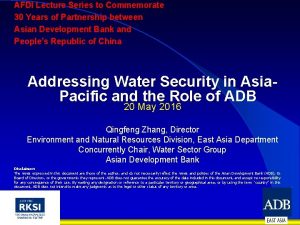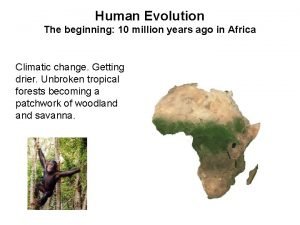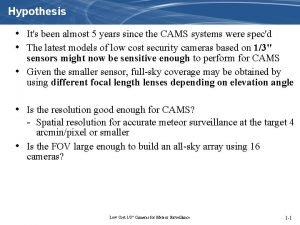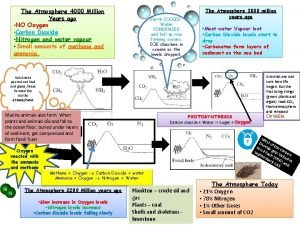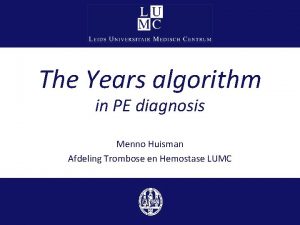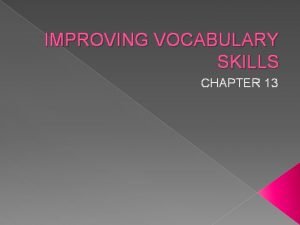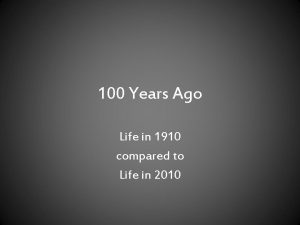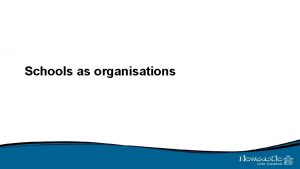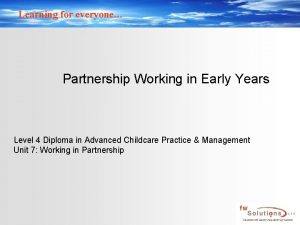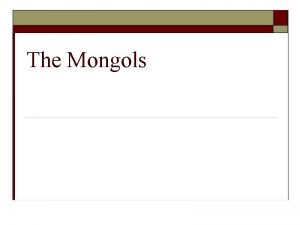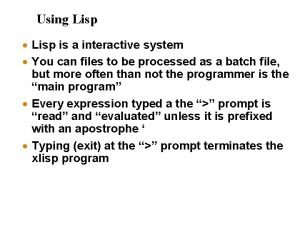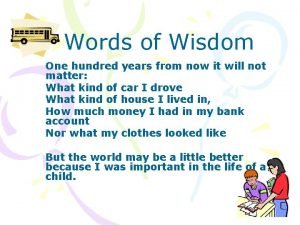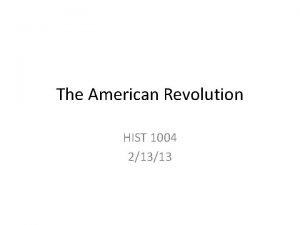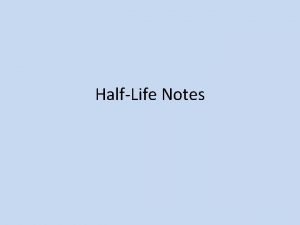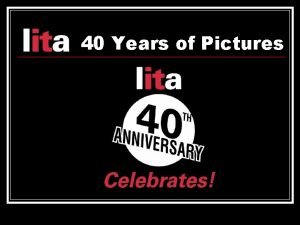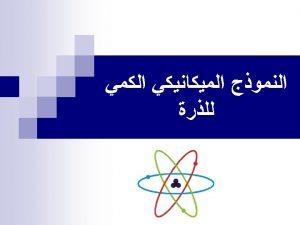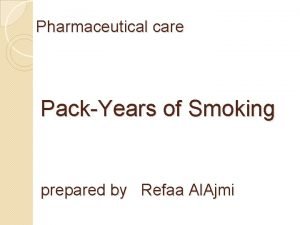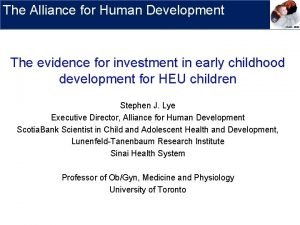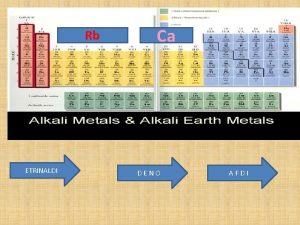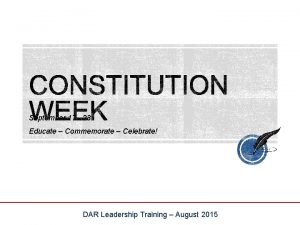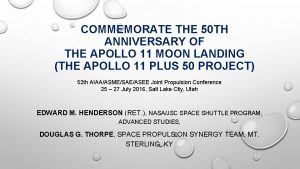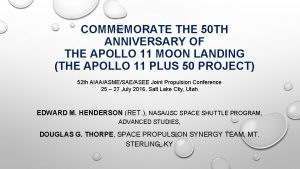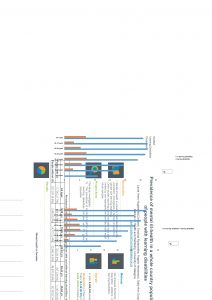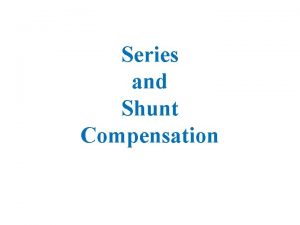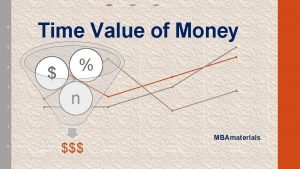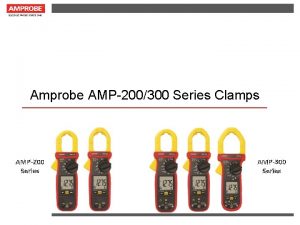AFDI Lecture Series to Commemorate 30 Years of

















































































- Slides: 81

AFDI Lecture Series to Commemorate 30 Years of Partnership between Asian Development Bank and People’s Republic of China Addressing Water Security in Asia. Pacific and the Role of ADB 20 May 2016 Qingfeng Zhang, Director Environment and Natural Resources Division, East Asia Department Concurrently Chair, Water Sector Group Asian Development Bank Disclaimer: The views expressed in this document are those of the author, and do not necessarily reflect the views and policies of the Asian Development Bank (ADB), its Board of Directors, or the governments they represent. ADB does not guarantee the accuracy of the data included in this document, and accept no responsibility for any consequence of their use. By making any designation or reference to a particular territory or geographical area, or by using the term “country” in this document, ADB does not intend to make any judgments as to the legal or other status of any territory or area.

Overview 1. Water Security – emerging paradigm 2. Some observations on water in PRC 3. Role of ADB 4. Looking Ahead – Issues and Challenges 5. Closing thoughts: Knowledge Solutions

I. WATER SECURITY EMERGING PARADIGM


Vision Societies can enjoy water security when they successfully manage their water resources and services to: 1. satisfy household water and sanitation needs in all communities; 2. support productive economies in agriculture, industry, and energy; 3. develop vibrant, livable cities and towns; 4. restore healthy rivers and ecosystems; and 5. build resilient communities that can adapt to change. Source: Asian Water Development Outlook 2013

Water Security: What and Why?

Household Water Security (KD 1) Household Water Security is essential to eradicate poverty • World: By 2030, achieve universal and equitable access to safe and affordable drinking water for all (SDG Goal 6. 1). • Asia and the Pacific: More than 60% of households live without safe, piped water supply and improved sanitation. • South Asia and the Pacific: These are hot spots with lowest coverage in piped water supply and improved sanitation. Inequity in access is highest in South Asia.

Household Water Security (KD 1) Challenges • Without increased investment and maintenance of facilities, modest gains over the past 15 years will be lost. • Failure to overcome the inertia in sanitation investments will cancel out the benefits from increased access to safe drinking water. • The region needs $59 billion in investments for water supply and $71 billion for improved sanitation.

Household Water Security (KD 1) Essential Actions • Integrate financing for water and sanitation into national accounts and planning. Each dollar invested in water and sanitation is likely to return $5–$46 in reduced health care costs and increased economic productivity. • Give agencies and service providers the autonomy and resources (financial and technical) to succeed, with accountability. • Double the current rates of investment in sanitation. Just $25 person will finance basic access to safe drinking water and improved sanitation and hygiene.

Economic Water Security (KD 2) Managing water is critical for modern economies • World: Industrial use of water increases as economies develop, from 10% for low- and middle income countries to 59% for high-income countries. • Asia and the Pacific: Agriculture accounts for 79% of annual average water withdrawals, and demand for food animal feed crops is predicted to grow by 70% to 100% over the next 50 years. • South Asia: The poorest and most populous subregion has relatively low agricultural water productivity.

Economic Water Security (KD 2) Challenges • • • The fastest increases in demand are now from industry and cities. 70% of food needs will be met by enhancing yields and could hasten water depletion and downstream impacts. Up to 40% of food produced is not consumed – wasting food, water and energy

Economic Water Security (KD 2) Essential Actions • • Every $1 invested in the modernization of irrigation services improves rural gross domestic product by almost $2. Implement appropriate policy measures to reduce competition among users and reverse widespread environmental damage. Actively manage water demand consumption In development planning, take into account climate change projections, potential changes to river flows, and the impacts of reallocation of water on downstream users, including wetlands and other land uses that provide environmental services.

Urban Water Security (KD 3) Many of Asia’s cities are becoming overcrowded, yet continue to attract more people • • • World: Cities occupy 2% of the world’s land, use 75% of its resources, and generate up to 80% of GDP. More than half the world’s slum dwellers live in Asia and the Pacific: Wastewater is often released into rivers, lakes and groundwater untreated or only partially treated. South Asia: As little as 22% of wastewater discharges are treated in South Asia, making it a hot spot for the growth of livable cities.

Urban Water Security (KD 3) Challenges • • Asia and Pacific cities discharge up to 80% of wastewater only partially or untreated. Increasing urban water security will require investments in infrastructure, capacity development, and education about water and wastewater issues in the region’s rapidly growing cities and towns.

Urban Water Security (KD 3) Essential Actions • Adopt corporate-style governance to improve urban water and wastewater services. • Encourage utilities to make urgent investments to reduce non-revenue water. • Increase wastewater treatment and control wastewater discharge. Reversing the trends for increasing pollution of water bodies is essential to protect the public health and economic growth. • Centralize flood management and integrate investments in infrastructure with land water management strategies and comprehensive urban planning.

Environmental Water Security (KD 4) Healthy rivers are the essential foundation for sustainable economies and societies • • • World: 60% of the world’s population lives in Asia, with the lowest per capita availability of freshwater Asia and the Pacific: 80% of Asia’s rivers are in poor health, jeopardizing economies and the quality of life. $1. 75 trillion in ecosystem services per year are threatened. South Asia: This region has the lowest environmental water security, posing huge challenges for sustainable development.

Environmental Water Security (KD 4) Challenges • • • Improving river health requires integrated water resources management (IWRM). 50% of irrigated area in Central Asia is saltaffected, waterlogged, or both. Uncoordinated water resources development (hydropower, impoundments, flood control, diversions, etc. ) negatively affect half of Asia’s rivers.

Environmental Water Security (KD 4) Essential actions • Accelerating the process of IWRM with all basin stakeholders will increase the return on public investment in water storage, productivity, and conservation. • Public investment, market-based approaches, and support from the private sector can reduce pollution and finance the restoration of healthy rivers. $1 invested in a river restoration program can return more than $4 in benefits.

Resilience to Water-Related Disasters (KD 5) Resilience to water-related disasters secures lives, livelihoods, and economic assets • World: 90% of the world’s disasters are water-related, including floods, droughts, hurricanes, storm surges, and landslides. • Asia and the Pacific: Disasters related to water have sharply increased, particularly floods. 90% of the people affected by water-related disasters live in Asia. • South Asia and the Pacific: These two subregions face the highest risk for water-related disasters and have the lowest resilience.

Resilience to Water-Related Disasters (KD 5) Challenges • • • Most countries in the region have yet to incorporate disaster risk reduction into their public investment planning. 75% of vulnerable urban populations in coastal zones live in Asia. Although improved forecasting has reduced the number of deaths from water-related disasters, the costs of flood disasters in the region have increased over time, reaching estimated damages of over $61 billion in 2011.

Resilience to Water-Related Disasters (KD 5) Essential actions • Save lives and economic losses by investing in modern flood forecasting, effective early warning systems that reach local communities ‘the last mile’, and by sharing information across national boundaries. • Reduce the cost of rehabilitation after disasters by investing more in risk reduction and preparedness through a combination of structural and nonstructural solutions.

Water Security Indices Household Water Security (KD 1) Urban Water Security (KD 3) Economic Water Security (KD 2) Environmental Water Security (KD 4) Resilience to Water-Related Disasters (KD 5)

Water Security Framework: Key Dimensions Household Water Security Resilience to Water. Related Disasters Environmental Water Security Economic Water Security Urban Water Security

National Water Security in Asia and the Pacific Source: Asian Water Development Outlook 2013

Asian Water Development Outlook 2007: National Water Security and Governance l a c i s y h p of se u a c r e o b e t t o a n u is eq s d i s a ri in c f r o ate ause w en t bec ance t f O bu rn : e 7 v , 00 ater r go 2 e O fw t D a AW city o iate w r sca propr p ina Source: Asian Water Development Outlook, 2013

II. SOME OBSERVATIONS ON WATER IN PRC

PRC Water, Water • PRC has 20% of world’s population, 7% of the global water resources; • Its per capita water volume is only one fourth of the world average; • The northern region of the PRC is home to 40% of the population, but only 14% of the water; • More than half of its 660 cities suffer from water shortages.

PRC Sign of Water Crisis • 320 million rural people lack access to safe drinking water • 190 million people use drinking water containing excessive levels of hazardous substances • Water crisis costs at least 2. 3% of PRC’s GDP. Ø Ø 1. 3% from physical water scarcity 1. 0% from water pollution (i. e. , effective water scarcity)

PRC 43% of Surface Water Not Suitable for Drinking Hai River Songhua River Huai River Liao River

Over the past 40 years, reclamation has caused the disappearance of nearly 1, 000 natural lake wetlands in the PRC (1. 3 million hectares)

PRC Industrialization, Urbanization and Population Rise

PRC: Impacts from Climate Change Northwest: desertification (higher evaporation) North and Northeast: increased water scarcity Coastal regions: typhoons, storm surges, and long -term inundation Tibetan Plateau: change in river flows / melting glaciers Southern PRC: increase in flood frequency and magnitude

PRC progress towards national water security (2. 4/5) • Household water security: rating (3) • Economic water security (3) • Urban water security (2) • Environmental water security (2) • Resilience to water-related disasters (2)

III. ROLE OF ADB

ADB is not just a bank § Increased water use efficiencies across the range of users Rural Water § Expanded sanitation and wastewater management § Embedded IWRM, including improved risk management Urban Water § Expanded knowledge and capacity § Enhanced partnerships with the private sector Basin Water

Goal 6: Water for All Sustainable Development Goals 36 Goal 6: Ensure availability and sustainable management of water and sanitation for all 6. 4 Water Use Efficiency IWRM 6. 2 6. 1 6. 5 Universal Water Access Equitable Sanitation In addition, links to: • Goal 1: End poverty in all its form everywhere, • Goal 2: End hunger, achieve food security and improved nutrition and promote sustainable agriculture, and • Goal 13: Take urgent action to combat climate change and its impacts Flood Control & Drainage Recycle & Reuse 6. 3 Ecosystem Protection 6. 6

Where our water investments go? Our investment areas in water are grouped into: • Rural Water - rural water supply and sanitation; irrigation and drainage • Urban Water - urban water supply, sanitation, and wastewater management • Basin Water - water resources development and management, flood management, wetlands and watershed protection and preservation, hydropower generation

ADB’s Water Financing Program 2006 -2020 ü To deliver substantial investment, reform, and capacity development in: • Rural & urban water services; River basin water mgmt ü Targets: • 500 million with safe drinking water & improved sanitation • 96 million people with better irrigation & drainage services • 170 million people with reduced flood risks • Integrated water resources management introduced in 30 river basins in Asia • Annual investment: $2 -2. 5 billion in 2011 -2020 ü Water Operational Plan (2011 -2020) ü Approvals for 2011 & 2012: $4. 04 billion 38

39 Scaling up Water Operation Value in $ million 4, 000 Scaling up from $2 -2. 5 billion annually to $3 -4 billion annually from 2017 3, 500 3, 000 2, 500 2, 000 1, 500 1, 000 500 2011 2012 2013 2014 Water 2010 -14 2015 2016 2017 Water 2015 -17

Lao - Small Towns Water Supply and Sanitation Sector Project • Helping Nam Papas to become corporate entities under the “Enterprise Law” • Helps set tariffs at levels that would enable Nam Papas to recover the costs of O&M • Includes minimum service level targets • Encourages regulatory reporting • Possible automatic tariff adjustment mechanism to follow

Nepal - Second Small Towns Water Supply and Sanitation Sector Project • Trialing output-based aid • Using performance-based grants to target underserved communities • Traditional subsidies are normally in the form of “inputs” but here the subsidy or aid follows only after successful delivery of the “output” • Expected to provide 17, 000 people with access to safe drinking water supply and 32, 000 with improved sanitation

Cambodia - Phnom Penh Water Supply and Sanitation Project • An older project which is still showing the way • Transformed PPWSA into one of the best utilities in the region • Helping map out ADB interventions in 9 other cities • Infrastructure investments are blended with business change process • Overall approach is geared-up to improve operational performance and service delivery

PRC - Wastewater Treatment and Reuse Project • This is ADB's first private sector loan to support wastewater re-use in PRC • Stimulates private sector participation • Addresses water security • Addresses efficiency in power consumption • It will serve as demonstration of the potential for re-use

PRC - Suzhou Creek Rehabilitation Project • Designed to take a holistic approach to Shanghai’s water pollution problems • Solutions included hard engineering including sewer networks and canal gates • Solutions included soft engineering including rehabilitation of river banks to create public realm spaces • Solutions included structural changes to allow closure of point source polluters, or facilitating their re-location

PRC - Chao Lake Environmental Rehabilitation Project • Introduce an integrated approach to overcome the issues of point source pollution control, non-point source pollution management • Lake authority capacity building, and strengthening of wastewater services • Solutions included structural measures such as wastewater treatment and sewer networks • Solutions included institutional reform and capacity building for integrated water resources management • Solutions included innovative non-structural measures such as eco-compensation and nutrient trading to reduce the agricultural non-point sources flowing into the lake

Nanjing Qinhuai River Environmental Improvement Project • Public-Private Participation: water bond issuing • WWTPs and collection systems • River Rehabilitation: diversion and water replenishment, wetland parks • Flood control: stormwater drainage system

Xinjiang Altay Urban and Environment Improvement Project • 3 R approaches—reduce, reuse and recycle • innovative institutional arrangement • Long term sustainability

IV. LOOKING AHEAD – ISSUES AND CHALLENGES

1. Water Scarcity and Pricing • Water productivity in agriculture and industry will only address 20% of the supply-demand gap. • Business-as-usual supply will only add another 20% • 60% gap in 2030 Source: 2030 Water Resources Group. 2009. Charting Our Water Future. 49

Traditional Supply Measures to close the gap are costly • Between $0. 05$0. 10/m 3, with most costly measures of $0. 50. m 3 or more • Hence, the need address the demand measures. Source: 2030 Water Resources Group. 2009. Charting Our Water Future. 50

Comprehensive Solution Source: 2030 Water Resources Group. 2009. Charting Our Water Future. 51

Example: PRC’s water cost curve • Industrial efficiency measures can close ¼ of the gap = savings of $24 billion in 2050 Source: 2030 Water Resources Group. 2009. Charting Our Water Future. 52

Pricing is critical to water management!

2. Need for local view of the water problem • Crisis happens not only when the gap is large but also when it is hard to close • The local situation is important Source: 2030 Water Resources Group. 2009. Charting Our Water Future. 54

… different country, different challenges • • India Ø low agricultural water productivity and efficiency Ø aging supply infrastructure China Ø rapidly growing industrial and urban demand growth Ø increasingly complex water-energy nexus Brazil (São Paulo state) Ø multi-sector activities drive quantity and quality issues Ø highly urbanized, industrialized, and agriculturally active region South Africa Ø fast-growing urban demand is outpacing supply Source: 2030 Water Resources Group. 2009. Charting Our Water Future.

PRC’s industrial and urban demand • Transportation of water • Energy intensive water treatment • Water resources for power production Source: 2030 Water Resources Group. 2009. Charting Our Water Future. 56

3. Drinking water services for all • Many people in the region do not have continuous (24/7) access to potable water services • Many utilities fail to deliver against quality and pressure service levels • There is an issue of sustainability – whether the supply would last as many utilities rely on non-renewable sources • Delivering services to ever growing urban populations is a huge challenge • Be flexible and adopt different approaches to service provision • And utilities must strive to be financially self-reliant by operating as autonomous and accountable service providers

4. Wastewater/Sanitation services for all • 1. 7 billion people in Asia do not have access to adequate sanitation • It is not simply dignity and disease, it impacts on water quality • Quality and sustainability of sanitation facilities remain an issue • Lack of knowledge on technology and solutions, and unclear returns of sanitation investments • Income generating opportunities exist – it should not be an investment dead-end

Promoting wastewater management, and investing in the 3 Rs • A lost service; and a missed business opportunity • Establishing Tariff Schemes • Opening Wastewater Management Market • Integrated Wastewater Management Approaches • Wastewater Reuse

5. Delivering on effective river basin management ADB, with the Network of Asian River Basin Organizations (NARBO) and other partners, support: • integrated water resources management (IWRM) • adaptive management approach • benchmarking for performance improvement of river basin organizations, and • greater participation by water users’ in river basin management

Considering inter-basin water transfers • Water resources are unevenly distributed in time and space • Substantial social and economic benefits are obtained with: • Reservoirs to alleviate seasonal disparities • Inter-basin transfer to alleviate geographic disparities • Impacts on environment and aquatic eco-systems must be addressed • Urbanization, industry and agriculture will place new demands on local water resources increasing calls for inter-basin transfer. • This approach is being debated

Revitalizing rivers and improving water quality Will require: • Collective effort from government, industries, business and the individual • Many years to complete and much effort to sustain • Political will, technical advancements, financial costs but most importantly behavioural change IT CAN BE DONE! Outstanding examples abound: • 2012 Healthy Waterways Winner Canungra Creek Rehab by upgrading sewage treatment plants • Kitakyushu’s “My River My Town” project

6. Where the impacts of climate change will be felt most • Large surface irrigation systems fed by glaciers and snowmelt (e. g. , northern India, Mekong catchment, PRC) • Large deltas which may be submerged by sea-level rise are increasingly prone to flood and storm or cyclone damage, experience salinity intrusion through surface and groundwater (Bangladesh, Yellow River in northeast PRC) • Surface and groundwater systems in arid and semi-arid areas where rainfall will decrease and become more variable (large parts of India, Sri Lanka) • Humid tropics that experience seasonal storage systems in monsoon regions, where proportion of storage yield will decline but peak flows are likely to increase (most of Southeast Asia). • All supplemental irrigation areas where the consequences of irregular rainfall are mitigated by short-term interventions to capture and store more soil moisture or run-off. Source: FAO typology

Drying-up - risk management to resist droughts • Physical scarcity is a growing concern • Water shortage may become a “new normal” for many places • Traditional approaches of building more infrastructure will not be enough to fill the widening gap • An integrated water resources management approach is needed to bring balance and prepare safety net supplies for droughts

7. The emergence of the water-food-energy nexus • The water-food-energy nexus is emerging as a critical issue • Irrigated agriculture is first to suffer from water shortages – PRC is vulnerable • Global demand for energy and food is growing exponentially • Globalization of food production (e. g. Russian grain) allows water shocks to move quickly through markets • Multi-sector decision-making is required to arrest these trends

8. "Technology as a Tool" • ADB is advocating the use of the "right" technology for: Ø improved efficiency: less energy consumption, smaller footprint, easier operation Ø less waste, increased reuse of resources Ø sustainability of cities • It should be noted that it: Ø is not for free but benefits will outweigh the costs Ø should be supported with the right institutional mechanisms

Membrane technology • Potential role in PRC • $0. 50 -070/m 3 – 2 -3 times more expensive than traditional technologies • But offers superior quality • Can serve a volume of 85 billion m 3 by 2030 • Use in municipal clean water treatment Source: 2030 Water Resources Group. 2009. Charting Our Water Future.

Nanotechnology • Nanotechnology can help improve recycling of wastewater and sewage treatment Ø water for as irrigation or industrial purposes Ø nanofiltration membranes to remove specific pollutants Source: National Academy of Engineering. Grand Challenges of Engineering.

Desalination • Fast growing globally • But high per-unit at $0. 60 -1. 30/m 3 • Calls for further improvement of the most efficient available technologies, particularly membranes • Bring cost down to ~$0. 50 per m 3 by 2020 • Nanotechnology and desalination Ø nano-osmosis: filter out salt with the use of tiny tubes of carbon Ø nanotubes have exceptional filtering abilities Sources: 2030 Water Resources Group. 2009. Charting Our Water Future. (2) National Academy of Engineering. Grand Challenges of Engineering.

9. Getting governance right ADB continues to advocate for the development of strong water institutions that are increasingly responsive to stakeholders. ADB works with government agencies, water users, private sector stakeholders, NGOs and academe to drive: • clear definition of roles and responsibilities, • empowerment of local institutions and stakeholders, including: • • basin organizations, irrigation water user associations, water supply and sanitation user groups private sector firms • review and revision of outdated water sector policies, including appropriate charging for provision of water resources and services • review and revision of water laws

Poor performance of utilities • Reliable service on a 24/7 basis remains elusive • Many utilities are inefficient and do not operate on sound business principles • Water is blatantly wasted • NRW is “tolerated” at extremely high levels • Improving the performance of utilities through driving down NRW pays dividends • This has to go hand-in-hand with staged cost recovery initiatives to reflect the true value of the service

10. Knowledge Solutions: The Future Depends on Them • Knowledge translated into written multimedia products • Technology • Networks

Networks - A Powerful Platform for Knowledge Sharing • centers of excellence abound but. . • a platform for knowledge sharing must be in place • building networks is one such platform • networks among peers gaining wider acceptance

V. CLOSING THOUGHTS: KNOWLEDGE SOLUTIONS

“Finance ++” at ADB’s own finance plus leveraging resources through partnership plus providing knowledge to developing member countries to maximize and accelerate development effectiveness 75

76

Relevance of Knowledge • Support the development of new knowledge solutions through partnership with centers of excellence and knowledge hubs, to achieve world-class knowledge solutions. • Expand support for pilot-testing new innovations and other knowledge solutions • Strengthen our sector and thematic communities of practice as sources of knowledge within and outside ADB • Support knowledge sharing regionally and globally 77

ADB Knowledge Hubs for Water Sector • Urban water management • Disaster risk reduction and flood management • Climate change adaptation in Southeast Asia • River basin organizations and management • Water quality management in river basins • Hydro-informatics in river basins • Water governance • IWRM in Central Asia • IWRM in the Pacific • Irrigation service reform www. apwf-knowledgehubs. net • Erosion and sedimentation • Healthy rivers and aquatic ecosystems • Water resources management in mountainous areas • Sanitation • Transboundary water resources management • Groundwater management • Climate Change Adaptation in South Asia

79 ADB’s Water Sector Group § Sector Committee: 1 Chair, 1 Technical Advisor, 8 Directors § Secretariat: 1 Technical Advisor, 2 International Staff and 1 National Staff § § Water Staff: 125 staff (88 HQ and 37 RM) Water SG membership: 200 members

Role of Universities, R&D and Centers of Excellence • High concentration of talent, both in faculty and students • World-class universities are well resourced • World-class universities are well-governed • World-class universities network with each other • World-class universities are reaching out to people everywhere 80

Thank you for your attention Asian Development Bank
 Sought to commemorate spanish resistance
Sought to commemorate spanish resistance Commemorate
Commemorate Four score and seven years ago means
Four score and seven years ago means Sheep years to human years
Sheep years to human years 300 solar years to lunar years
300 solar years to lunar years 01:640:244 lecture notes - lecture 15: plat, idah, farad
01:640:244 lecture notes - lecture 15: plat, idah, farad Geology lecture series
Geology lecture series Dcac lecture series
Dcac lecture series Maclaurin series vs taylor series
Maclaurin series vs taylor series Sum of infinite series
Sum of infinite series P series ibm
P series ibm Heisenberg 1925 paper
Heisenberg 1925 paper Feedback amplifiers
Feedback amplifiers Serie de taylor
Serie de taylor Series aiding and series opposing
Series aiding and series opposing Maclaurin polynomial
Maclaurin polynomial Cehl:morv::wybf:?
Cehl:morv::wybf:? 10 million years ago
10 million years ago 100 years of solitude synopsis
100 years of solitude synopsis It's been almost 5 years
It's been almost 5 years What is known as mother croon of bird
What is known as mother croon of bird Different calendar years
Different calendar years 19 in dog years
19 in dog years 3800 million years ago
3800 million years ago Consumer culture theory (cct): twenty years of research
Consumer culture theory (cct): twenty years of research Hello
Hello Sum of the years method of depreciation
Sum of the years method of depreciation Life span of eagle
Life span of eagle Thomas silverstein art
Thomas silverstein art Secondary 16 to 19 years
Secondary 16 to 19 years Eylf meaning
Eylf meaning Dinosaurs lived millions of years ago what did they eat
Dinosaurs lived millions of years ago what did they eat Renaissance years
Renaissance years The interwar years unit test
The interwar years unit test Block play early years
Block play early years Years beslisregel
Years beslisregel Sentence check 2 chapter 13
Sentence check 2 chapter 13 What happened 8 years ago today
What happened 8 years ago today Family life 100 years ago
Family life 100 years ago Bristol early years
Bristol early years Sredni vashtar story
Sredni vashtar story Hapsburgs
Hapsburgs Marbled crested lizard
Marbled crested lizard Eyitt course
Eyitt course Literary devices characterization
Literary devices characterization 8 years later
8 years later Early years summit
Early years summit Influences on rizal’s boyhood
Influences on rizal’s boyhood Ajayan is ten years older than vijayan
Ajayan is ten years older than vijayan Summarise types of early years provision
Summarise types of early years provision Once upon a time, there lived
Once upon a time, there lived Partnership working in early years
Partnership working in early years Lost generation ww1
Lost generation ww1 How many years is 3100 bc
How many years is 3100 bc What was the impact of russia’s “mongol years”?
What was the impact of russia’s “mongol years”? List of leap years
List of leap years Jean baptiste louis gros
Jean baptiste louis gros Great gatsby chapter 9 summary
Great gatsby chapter 9 summary 125 years ago today
125 years ago today Eye early years evaluation
Eye early years evaluation If his years as a marine taught him anything
If his years as a marine taught him anything Between what years does the viking age elapse
Between what years does the viking age elapse One hundred years word
One hundred years word Seven years war
Seven years war Assuming a half life of 1599 years
Assuming a half life of 1599 years 40 years pictures
40 years pictures Profit and loss percentage formula
Profit and loss percentage formula One cup spaghetti calories
One cup spaghetti calories Seven years war apush
Seven years war apush Ponce de leon motives for exploration
Ponce de leon motives for exploration Speciation can only be observed over millions of years
Speciation can only be observed over millions of years 400 bc to 1803
400 bc to 1803 Palestine and israel
Palestine and israel Johann dase
Johann dase Gary paulsen cookie dog
Gary paulsen cookie dog Australopithecus years of existence
Australopithecus years of existence Insects every 17 years
Insects every 17 years After twenty years by o henry
After twenty years by o henry Pack years in smoking
Pack years in smoking Tj invested $4000
Tj invested $4000 Child brain development 0-6 years
Child brain development 0-6 years Her life spanned years of incredible change
Her life spanned years of incredible change

